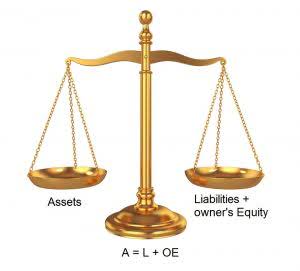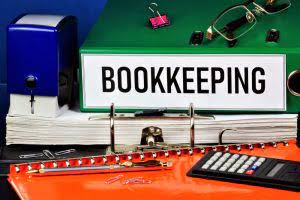
(Note that, as above, the adjustment to the inventory and cost of sales figures may be made at the year-end through an adjustment to the https://www.bookstime.com/articles/what-is-another-name-for-a-bookkeeper closing stock but has been illustrated below for completeness). The inventory (asset) of the business will increase by the $2,500 cost of the inventory and a trade payable (liability) will be recorded to represent the amount now owed to the supplier. On 5 January, Sam purchases merchandise for $20,000 on credit. As a result of the transaction, an asset in the form of merchandise increases, leading to an increase in the total assets.

Bookkeeping
- For example, you can talk about a time you balanced the books for a friend or family member’s small business.
- Those account types determine how debits and credits will be used to increase and decrease accounts.
- If there is, it would only mean one thing which is there is an error in accounting.
- This straightforward relationship between assets, liabilities, and equity is the foundation of the double-entry accounting system.
- Examples of assets include, but are not limited to, cash, equipment, and accounts receivable.
- This arrangement is used to highlight the creditors instead of the owners.
An accounting transaction is a business activity or event that causes a measurable change in the accounting equation. Merely placing an order for goods is not a recordable transaction because no exchange has taken place. In the coming sections, you will learn more about the different kinds of financial statements accountants generate for businesses. Owner’s equity is the remaining of what the company has after deducting all liabilities from its total assets. Due to this, the owner’s equity is also known as net assets or net worth. Accountants and members of a company’s financial team are the primary users of the accounting equation.
What is equity?
The Accounting Equation looks at what a company owns and compares it to what a company owes. Let’s use a delivery van for a florist shop as an example to explain. the basic accounting equation is: It will always be true as long as all transactions are appropriately accounted for and can never fail or be out of balance for any given entity.
What Happens if the Accounting Equation Is Not Balanced?

This refers to the owner’s interest in the business or their claims on assets after all liabilities are subtracted. Liabilities refer to debts or obligations owed by the business. They are a particular amount owed to creditors of the business. Examples of liabilities include accounts payable, bank loans, and taxes. It is important to remember that the total of all assets has to equal the total of liabilities and equity.

Although the balance sheet always balances out, the accounting equation can’t tell investors how well a company is performing. The accounting equation helps to assess whether the business transactions carried out by the company are being accurately reflected in its books and accounts. The concept of expanded accounting equation is that it shows further detail on where the owner’s equity comes from.
Accounting Equation Formula
Individual transactions which result in income and expenses being recorded will ultimately result in a profit or loss for the period. The term capital includes the capital introduced by the business owner plus or minus any profits or losses made by the business. Profits retained in the https://x.com/BooksTimeInc business will increase capital and losses will decrease capital.

It’s something the company owns that has value and will be used to make revenue for the business. Because the company paid out the cash, the asset value has decreased. To illustrate how the accounting equation works, let us analyze the transactions of a fictitious corporation, First Shop, Inc. They include items such as land, buildings, equipment, and accounts receivable. The calculation of net worth for a business uses the assets and liabilities shown in the balance sheet.
Ask Any Financial Question
The owner’s equity is the share the owner has on these assets, such as personal investments or drawings. As transactions occur within a business, the amounts of assets, liabilities, and owner’s equity change. After six months, Speakers, Inc. is growing rapidly and needs to find a new place of business. Ted decides it makes the most financial sense for Speakers, Inc. to buy a building. Since Speakers, Inc. doesn’t have $500,000 in cash to pay for a building, it must take out a loan.
- The owner’s equity is the share the owner has on these assets, such as personal investments or drawings.
- This is important as some companies may not be able to survive in the long term if their assets are mainly from liabilities while their equity is too small in comparison.
- The accounting equation focuses on your balance sheet, which is a historical summary of your company, what you own, and what you owe.
- The accounting equation helps to assess whether the business transactions carried out by the company are being accurately reflected in its books and accounts.
- The effect of this transaction on the accounting equation is the same as that of loss by fire that occurred on January 20.
- After almost a decade of experience in public accounting, he created MyAccountingCourse.com to help people learn accounting & finance, pass the CPA exam, and start their career.
For instance, inventory is very liquid — the company can quickly sell it for money. Real estate, though, is less liquid — selling land or buildings for cash is time-consuming and can be difficult, depending on the market. On the other hand, equity refers to shareholder’s or owner’s equity, which is how much the shareholder or owner has staked into the company. Small business owners typically have a 100% stake in their company, while growing businesses may have an investor and share 20%.
